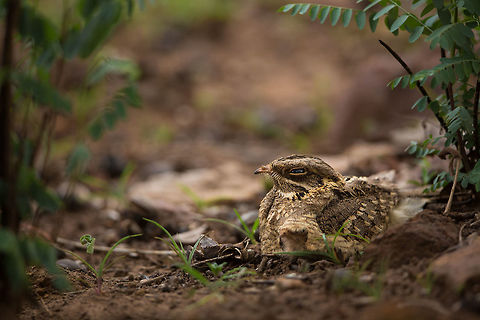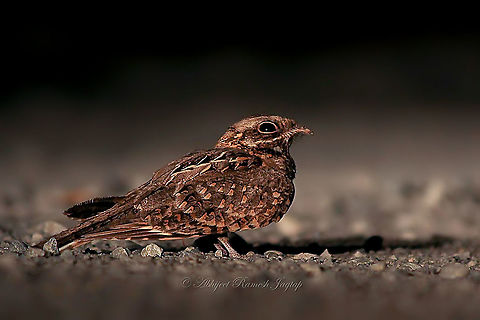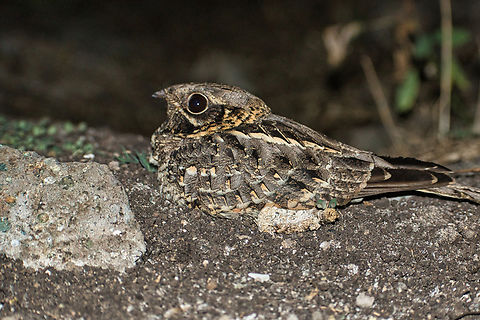
Appearance
This nightjar is small and short-tailed with white corners to the tail, a golden nape and collar, dark cheeks and white patches on the sides of the throat. The crown is grey and the breast is finely barred in brown.The males have more white on the tail while the female is more heavily streaked on the crown. It is differentiated from Sykes's nightjar by the dark undertail and from Jerdon's nightjar by the shorter tail and white patches on the sides of the throat.

Distribution
The species is found from northwestern India and adjoining parts of Pakistan but not found in the arid desert region. It is found south of the Himalayas in the low elevations east to Bangladesh, Myanmar and Vietnam. It is also found in Sri Lanka.
Behavior
The call is distinctive and has been likened to a stone skipped on a frozen lake or a ping-pong ball bouncing rapidly and coming to rest.It flies after sundown with an easy, silent moth-like flight. During the day, Indian nightjar lies still on the ground, concealed by its plumage; it is then difficult to detect, blending in with the soil.
Habitat
The species is found in open woodland, scrub, and cultivation. It usually sits on the ground or low trees and is not found on high perches.Reproduction
No nest is made; the two beautifully marbled creamy pink eggs are placed upon the bare ground during February to September; the brooding bird, sitting closely, is well camouflaged. Eggs may be moved short distances. The newly hatched chick is covered in down with brown above and light rufous below. The eye is open on hatching and the chick can sit upright and make a weak sound.References:
Some text fragments are auto parsed from Wikipedia.